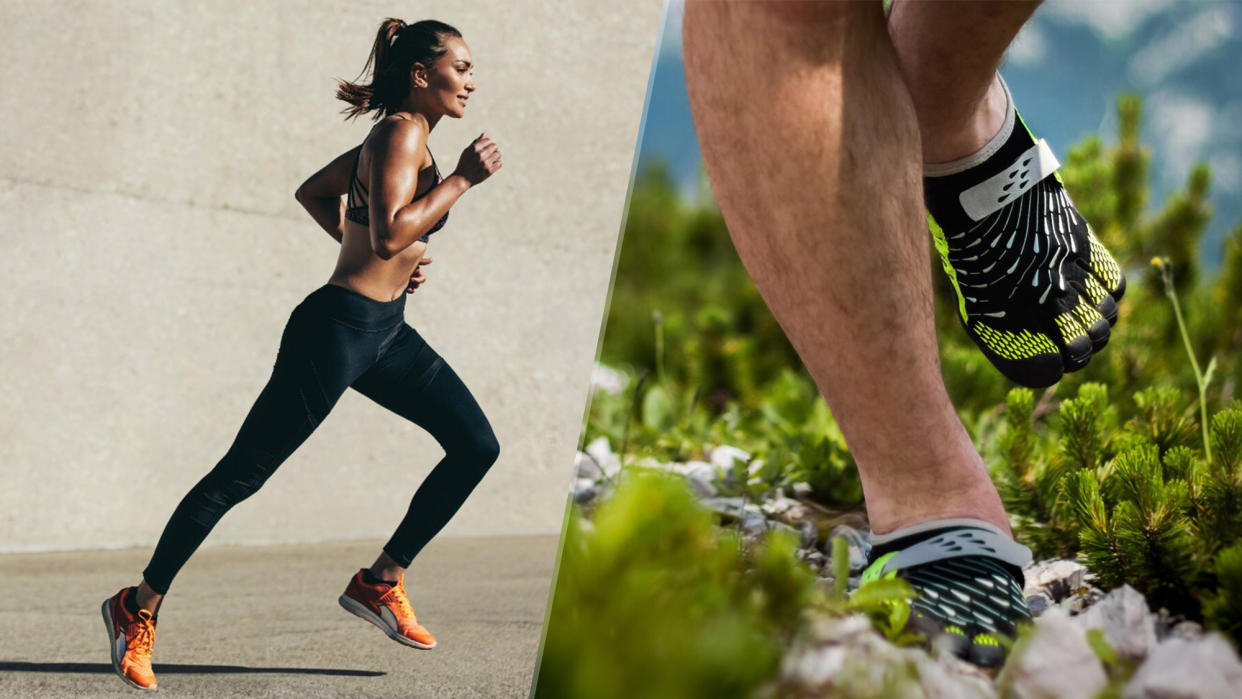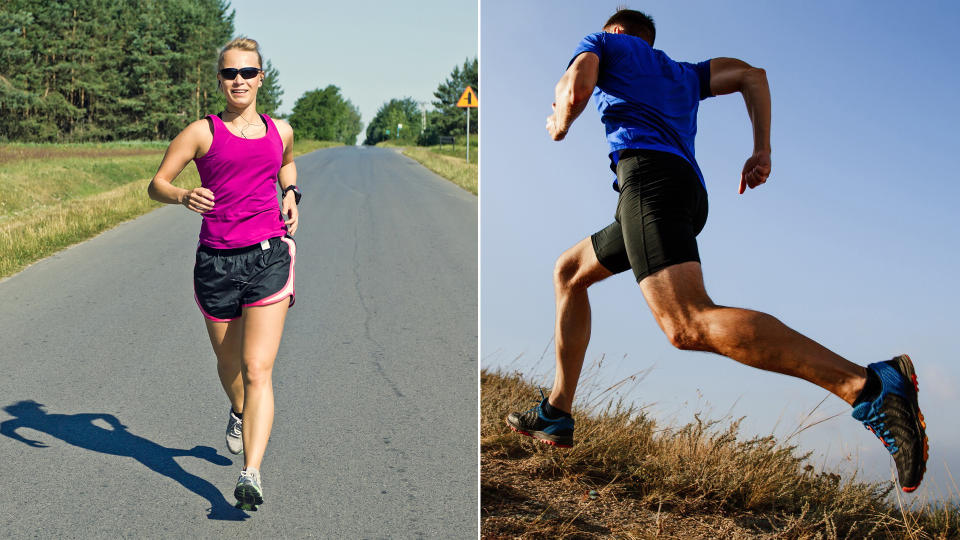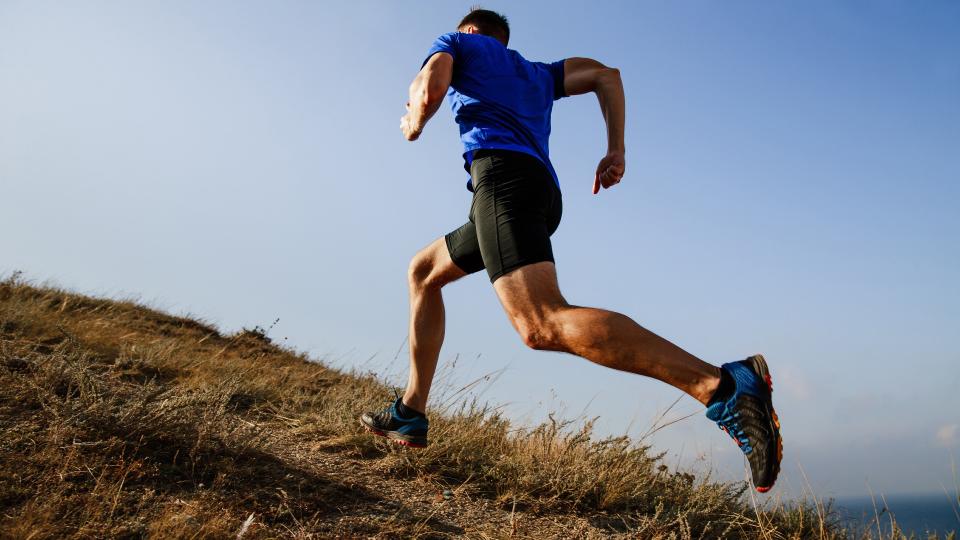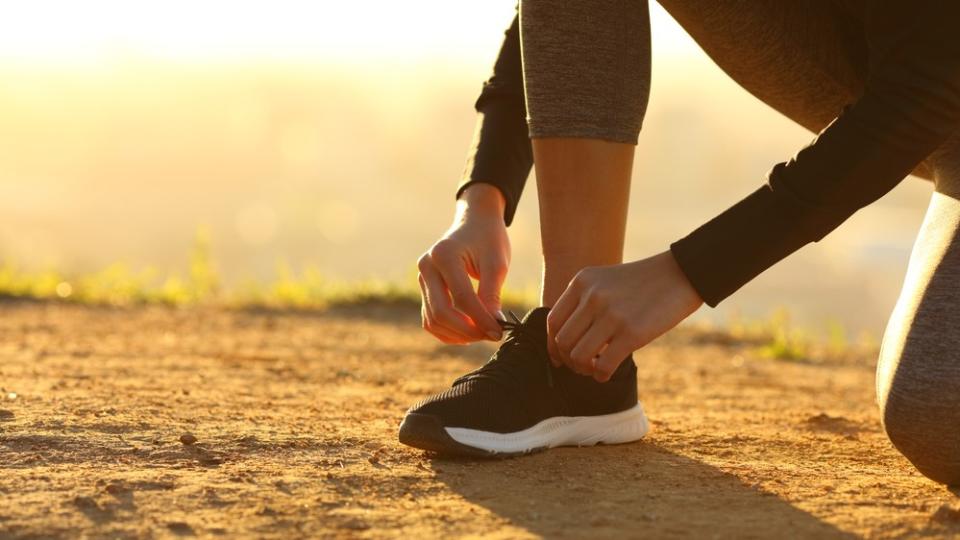Barefoot running vs running with shoes: Which builds more leg strength?

Barefoot running is having a moment, so if you’re weighing up the pros and cons of shod running versus barefoot running (or using a minimalist shoe) — here’s what you need to know.
Whenever topics like this come up, it’s important to distinguish between fad and non-fiction. Running with shoes and barefoot running are popular, but although running is beginner-friendly, barefoot running isn’t something you jump into feet first. So, while #barefootrunning continues its moment, clocking up over 4 million views on TikTok alone, here’s what you need to know about both.
Running builds stronger joints, muscles and bones, boosts cardiovascular fitness and endurance and burns calories. But which one builds more strength? And is one better than the other? Grab a pair of the best running shoes and read on for our verdict.
Running with shoes vs barefoot running: What’s the difference?
There are so many options when it comes to running these days. We’ve just seen athlete Tigsit Assefa smash the women’s marathon record wearing the single-use Adizero Adios Pro Evo 1s — Adidas’ hefty 39mm heel answer to winning races — and, of course, the rise of the minimalist shoe.
These are opposite ends of the scale. But it comes down to this — should you pad up with the cloudlike cushioning of the Asics Gel-Nimbus 25 running shoe, for example, or strip it back to basics?
Let us briefly cover why we wear running shoes. Many sneaker companies create a shoe based on different types of foot structures. Feet are unique, which means the dream for one person is another’s nightmare.

The pronation and supination foot postures are normal mechanisms of running. Pronation helps absorb shock from the ground. As we run, the foot will roll and tip inward from the heel to the front of the foot, laterally to medially. Supination refers to an outward roll during the push-off phase of stepping.
A stability shoe suits those who overpronate (turn in too much) and flat-footed runners and helps with more cushioning toward the inner side of the shoe. Then there’s the neutral shoe, which suits anyone with a medium to higher arch and can correct over-supination where the foot hits (and stays) lateral. You’d expect to see cushioning along the outside of the shoe for that reason.
Shoe companies also design shoes between, with various heel drops and so on. With a minimalist shoe (a barefoot design that isn’t quite barefoot), the shoe is made as natural as possible — like running barefoot. We see them everywhere, made by companies like Vivobarefoot and New Balance. The idea is to allow the foot to strike the ground without added cushioning and zero heel drop — to be natural and promote natural strength and movement.
Running with shoes vs barefoot running: Pros and cons
The benefits of running are plenty, so to shoe or not to shoe?
Barefoot running is believed to improve leg and foot strength and mechanics, encourage a natural gait and running style and increase balance and proprioception, which makes sense, as it’s how our ancestors ran, right?
But according to APMA, there’s not enough conclusive evidence to say for sure. Some reported cons include a lack of protection and added load and stress on the joints. And some research backs this, like a study by Nature, which has found barefoot running provides less stability to runners.
It’s also painful. Without ample cushioning, the sensory undersides of your feet can feel everything (and we mean everything), which can take some getting used to.
It’s not all doom and gloom — a study by Harvard concluded that ‘habitual barefoot runners get more proprioceptive feedback, often shorten their strikes and increase their stride frequency,’ which helps ‘keep joint moments low’ and strengthens the feet.

Learned properly, you could decrease your risk of injury by teaching your feet to function how they should, naturally, before we came to wear shoes. Barefoot runners have been shown to shorten stride, land with the mid or forefoot, increase cadence and decrease stride length, decrease load on the joints and build strength.
By comparison, the cushioning of a running shoe, while offering protection and preventing injuries caused by over-supination or overpronation, prevents the feet from strengthening naturally using feedback from the ground. And because cushioning helps propel the feet forward (great if you're competing), your body must work harder running barefoot, which might burn more calories, sports physical therapist Michael Bogden tells the Cleveland Clinic.
Although running shoes could provide more stability, support and faster running times, barefoot runners report feeling better connected with the ground and improved running gait patterns. But what much of the current literature agrees is that you’ll need a transition period, and the best foot forward seems to be trying both.
Running with shoes vs barefoot running: Which builds more strength?
In theory, the muscles in the feet and lower legs must work harder running in minimalist shoes, which should build stronger joints and muscles in and around the feet, ankles, knees and legs. It makes sense that barefoot running should build a more resilient, injury-free lower body. That said, the jury is still out while the research catches up!

Bottom line
Our verdict?
Choose what you feel most comfortable in. Whichever option you choose, your running shoe style depends on your foot type, terrain and experience. Think about where you plan to run, whether you’ve practiced barefoot or minimalist running before and how long you plan to run for. Beginners should consider switching between the two styles and adopting a run-walk system, gradually transitioning over time.
You could also slowly reduce the heel drop in your shoe so that your foot can adapt to the zero-drop design (when the heel sits in line with the toes) of barefoot running. For longer runs or competitive races, you may wish to stick to cushioned shoes that maximize energy return, especially if you have an injury or tend to overpronate or supinate.
Beginners should always start with a running shoe that can protect their joints until they’ve built enough functional, foundational strength to switch over. Novice runner? Try simply walking in barefoot shoes, which studies reveal can increase foot strength without running. We recommend adding bodyweight compound exercises like squats and lunges to your routine and warming up with mobility exercises for the lower body using the best foam rollers before or after a run.
